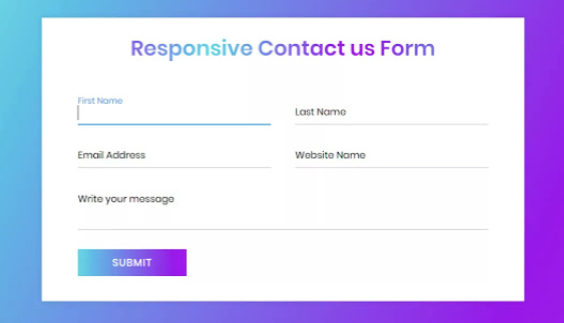11 steps to the perfect architectural site concept
One concept, several solutions
If you are considering launching a new website, you need to ask yourself some important questions ahead of time. These concern technical aspects, but at the same time cover the field of marketing.
With the answers to these questions, you can right from the start chart the course for a successful website by avoiding common "rookie mistakes". We show you in this article how to design your new website perfectly.
1. Define the objective: What do I want to achieve with my website?
Every website has at least one goal. For example, an online store wants to sell primarily products, a blog, for example, wants to educate customers, while a landing page is often used for lead generation.
Before planning any further, think about what the goal of your website should be. Then you can finally line up the next steps. In addition, the purpose of the website is also important for your marketing planning.
→ Write down the objectives of your site.
2. Definition of target group: Who do I want to reach with my website?
You have now found a destination. Now it's time to identify your target audience. In this way, you will get the basics of aligning content, wording and other areas of your website. The result of a target group definition can be called "personas". These are fictitious profiles which, together with the medium of real personal data, exemplify a typical user of your website.
Common criteria for defining your target audience are:
age
sex
social status
literacy
3. Analyze the competition: Who are my competitors in the net?
It is always important to know your competitor. This applies to entering the brand with a new product as well as for a website. And this is even more true if you want to make money with your website, because you want to start an online store, for example.
A first step in analyzing the competition leads you to Google Search. If you have a core product or a core service that makes up your business, you can search for that term or combination of terms on Web. The search results pages then tell you which competitors exist and which competitors are well placed.
You can of course search for more than one product group, segment or industry to define other core terms.
Now you should be looking at the top ranked websites from the competition. Just consider only the first page search results. The following aspects will help you:
Content: Are top-ranked sites using a lot of content? Is there a blog or magazine? What is the tone of the site? Is the quality of the content high? Is there attractive visual material or is it used as a unit / image? Are there different language versions?
Page Speed: Does the website load quickly?
Architecture: What are the menus? What categories does the site use?
style: How was the web design implemented? How does the website look mobile?
Your competition analysis should not aim to copy other websites exactly. However, there are projects competing for you to define your own strengths and know which direction you want to take with your website.
→ Note the aspects you want to implement with your website.
4. Lateral architecture: What categories should there be?
Categories in online stores usually result from top product groups. It gets a little more difficult with a blog. Here you can orient yourself in the top level topic categories, into which your articles can be classified later.
The category name may still be tentative at this point. But it is advisable to define the names at the latest when creating the site in a CMS. Because according to the categories, the names are naturally also the directories, which creates the system and therefore also the URLs.
5. Create a visual concept: what should the menus and navigation look like?
Menus and navigation trees are crucial elements that affect the usability of your website. It is all the more important to think about how the navigation menus should be organized and what type of menu to use.
Scrolling menu This menu is often used for websites with many categories and subcategories. It works after clicking or hovering the mouse.
Static menu The static menu is always to the left or right of the site content. With one click, users enter the desired category. Smaller websites can benefit from this.
Header navigation This allows horizontal navigation. Menu items are arranged from left to right above the content.
Hamburger menu This menu is structured like a hamburger with its three layers of "buns". By clicking on the three bars one above the other, the menu will open and you can click on the individual categories.
At this point it is not possible to give a specific recommendation for a particular menu. Each has its advantages and disadvantages.
Depending on the menu choice, you can also select your content management system. For some CMS such as WordPress, the menu can be predefined by selecting a specific template.
In online store systems, there are usually different choices for creating a menu.
Basic considerations when planning the navigation menu:
A user should get the best three clicks possible for each page on your website.
The faster your users find what they are looking for, the better their experience and the higher the chances of conversion, long retention time, and high bounce rate.
Internal content links should also be set via anchor links in the menu to ensure page "blood flow" with Linkjuice.
Always use the same keyword in anchor text for a landing page. Do not use the keywords in the menu twice.
6. Webdesign: What requirements apply to the design?
Web design is both a matter of taste and a matter of user-friendliness. If your business already has a visual identity, this should be reflected on your website. It starts with colors, goes beyond backgrounds, shadows, and alignments, and ends with the font used.
What you should consider in web design:
Your target audience
First mobile
Great ease of use on all devices with which the page is called
Your graphic charter
Of course, your web design also affects your conversions if you want to design an online store. What are the 7 basics that you can observe, we wrote in this magazine article.
Another tip: Never decide solely on web design. You can assume that your website is used by many different people, who have different preferences and tastes. Show your designs to your team, if you have employees, show them to friends or acquaintances. Get as much feedback as possible.
7. Create content I
Which texts are inserted where?
(Keyword research, WDF * IDF, Title / Descriptions)
Keywords: In order for your content to be liked not only by users, but also by Google, keyword research is an essential prerequisite for creating texts, for example for individual categories or even products.
That finding meaningful keywords isn't that hard, we've already shown you in this article.
Content relevance: Once you have identified the key keywords for your web pages, you move on to content creation. To find not only the core keywords, but also the related and relevant terms that best cover your topic, you then need to perform a WDF * IDF analysis with the created texts.
If you use SEO Expertise, you will find the WDF * IDF analysis in the Content Success module.
Title and Descriptions: Finally, you can boost keyword targeting by using the core search terms of your URLs in Title and Description. How to optimally create this you can find here. Tips: How to further improve your CTR in SERPs with the page title and description, we have put together here for you.
wdfidf-analyze-4 Website concept, creative content design
Figure 1: WDF * IDF analysis with SEO Expertise Content Success
8. Create content II
What graphics are needed?
It is important that web design is concerned with the use of graphics. Where to place the images? What graphics are needed? If you do not create the illustration yourself or already have models, it is advisable to entrust this work to professionals.
9. Tests: How do users manage my page?
If you order a car, you will receive a finished product, which usually will not be changed later. The position of the doors is fixed, as is the space for the engine. It's different for a website. This is a flexible entity that you have to modify over and over again to meet the needs of your users. You can first have different versions of your website tested by real users. Based on the analysis, the website can then be perfected.
10. Create a content concept: how and according to what specifications is content created?
It makes sense to write a guide to creating content on your new website that determines what content is created. At this point, it is not a fixed timeline, but rules for the production of text and images. It may seem very bureaucratic at first, but then makes it easier for everyone involved. This is especially true when different employees or different teams are involved in the production of the content. As soon as the exact specifications are available, everyone can orient themselves. You will find that the production of content is much more efficient. At the same time, a guideline ensures that your content production delivers a cohesive overall picture.
The guide does not need to be set in stone, but should be adapted regularly to new requirements or new challenges.
Some examples of content guide criteria:
Text Length: How long should product descriptions be? How long should a blog post be?
wording: What tone should the lyrics have? Are there certain preferred terms or spellings? Are users buzzed or geduzt?
Text structure: How many captions should product, category or blog texts have? How should they be formatted?
Images and graphics: Where to place images in text? What size should they be?
11. OnPage Optimization: What are the most important factors?
Once your website is ready and live, you need to lay the foundation for good ranking. The basics of the overall website concept therefore include these important factors on the page, which certainly need to be optimized:
One concept, several solutions
As with a marketing concept, there is no one comprehensive website concept that works for all homepages. While the 11 steps presented here are all fundamentally relevant, the first step will be to differentiate the goals from one site to another. Now, if you are starting with your concept, you should give yourself plenty of time until each step is satisfactorily completed. We wish you lots of planning fun!



Comments
Post a Comment
Dont abuse .